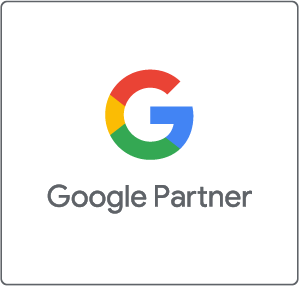When was the last time you Googled something? It’s become second nature for us to turn to the internet when we have questions or are looking for a business.
No matter where people search for your business online (search engines, social media, AI, or map apps), you want to be visible. Traditionally, this visibility comes from your Search Engine Optimization (SEO) efforts. More recently, the term has evolved into Search Everywhere Optimization (still SEO) to cover other online sources like AI, shopping platforms, podcasts, and social media).
Search engines, websites and AI aim to bring searchers the most relevant results for their search. You need to follow the SEO “rules” to increase your visibility and appear at the top of search results.
In this quick guide, we’ll give an overview of how to use SEO strategies and tactics. With this information, you will be well on your way to start showing up in search engines and other online spaces when people are looking for you.
How do search engines work?
Let’s look at Google first. When you search for something in Google, the results don’t just magically appear. Google uses algorithms to rank all the world’s web pages based on the keywords people type in the search bar. Your job as a business or website owner is to meet as many of the algorithm’s requirements (over 200) as possible. This will help your page show up (aka “rank”) on page 1 of a search result when people are looking for your business.
Search engine optimization is how you make your website and online content attractive to Google’s algorithms.
Of the 200 factors, some we don’t have control over (such as how long you’ve owned your domain or website address). The rest are split into 3 core categories:
- On-Page SEO: Content on your web pages (written content, blogs, images, layout)
- Off-Page SEO: Content on other websites to drive traffic back to you (links on third-party websites or social media)
- Technical SEO: Coding and back-end optimization done to make your website SEO-friendly
Then, there is a fourth part that many businesses forget about: Ensuring your website’s user experience meets the searcher’s expectations. Getting “eyes” on your website is a good first step, but you also need to convert these visitors into customers, subscribers, or loyal followers. Your content and user experience is a strategy unto itself, but in simple terms, make sure your website answers your customer’s pain points.
Optimizing each of these areas will go a long way. It shows Google that you are an authority in your niche and that it should display your website in search results.
How AI is changing SEO
As AI expands, it’s having a significant impact on how businesses execute their SEO. We suggest creating a Generative Engine Optimization (GEO) strategy, also known as Search Everywhere Optimization.
Many of the same basic SEO fundamentals apply, but GEO emphasizes creating content that:
- Addresses FAQs or a specific user question
- Fills information gaps in the market
- Is repurposed into different formats (video, written, audio, visual)
- Is optimized for Voice Search Engine Optimization (VSEO)
- Is methodologically structured to make AI parsing easier
AI is already used in Search Engine Results pages like Google. Google uses AI to create results summaries within search results pages. These are typically featured as AI overviews or summaries, featured snippets, and “people also ask” sections.
AI’s impact on SEO is relatively new and we expect it will keep marketers on their toes in the coming years. We’ll stay on top of the latest developments in AI’s impact, so you don’t have to. Talk to us about how we can help with your Search Everywhere Optimization.
Why is SEO vital for business success online?
Having a strong online presence is important for every business. It will help you attract new customers and clients and increase the perceived legitimacy of your business.
Here are the top 4 reasons having good SEO is vital for your business success:
- It increases your visibility online: Appearing on page 1 of search results will typically earn you more clicks.
- It establishes credibility and trust: Higher rankings tell searchers you’re a trusted authority in your niche.
- It’s cost-effective: SEO can get you a higher, long-term ROI for your efforts.
- It has local benefits: Using local or location-based SEO plans, you can attract foot traffic and local shoppers to your business.
Hero Home Care recognized the value of SEO, so they partnered with Out-Smarts to create a robust digital marketing strategy. Their goal was to increase website traffic, leads, followers, and social engagement.
We built them a customized digital marketing funnel using Ads, SEO optimizations, and social media plans. Our efforts earned them an increase of:
- 81.90% in organic search
- 109% in direct traffic
- 509% in social media
- 55.49% in web traffic
5 Steps to boost your SEO strategy now
Whether you have an existing SEO blueprint already or are starting it from scratch, here are our essential 5 steps to do right now to boost your SEO power:
Step 1: Start with keyword research
Identify what words your prospects are typing in the Google Search Bar. You can determine this by asking them, “How did you find me today?” or by using SEO tools like Google Keyword Planner (free) or SEMrush (free-to-try and paid versions). Focus on keyword phrases correlating to your offerings, niche, or unique selling points (USPs).
Step 2: Optimize your website content (on-page SEO)
Assign a different keyword phrase to each main page of your website and your most popular blog posts. Aim to include that phrase no more than 2% of the content. Include it in your title, subheadings, lists, and ALT text of images. You can check the density of your chosen keyword using this free Keyword Density Checker.
Tip: Don’t feel you need to optimize every page and blog post on your website right away. Prioritize key pages (like your home, about, or a core service page) first. You can optimize the additional pages over time.
Step 3: Check and boost website performance (technical SEO)
Google will penalize a slow-loading or poorly designed or coded website. Get a web developer to optimize images for faster loading and clean up any extraneous code interfering with page loading times. Also, check that your website is mobile-friendly (which is one of the factors Google uses to rank your site in results). Run an audit to make sure all of the links (internal and external) on your site work. If Google sees broken links your site will rank lower.
Step 4: Build backlinks (off-page SEO)
Begin looking for opportunities to get your website link added to other websites. This is called backlinking. Here are a few ways you can do this:
- Ask business partners in a related niche about including your link on their website in a blog post or resource page.
- Inquire about a business listing on reputable niche web directories
- Ensure your social media profiles link back to your website
- Share your blog posts and website content in social media posts
- Offer to write a guest blog post for another website or business (with a link back to your site in your bio)
By adding more backlinks from reputable sites, you increase your chances of higher Google rankings.
Curious about how to use backlinks in your SEO blueprint? Read our Top 5 Link Building Strategies article.
Step 5: Track progress and amend your strategy
SEO isn’t a one-and-done marketing activity. Like many digital marketing strategies, it needs to be monitored and will evolve over time. Make sure you have detailed analytics on your website and social media profiles. Be sure to track:
- Where your links are coming from
- What phrases people are using in the Google search bar
- What content or topics they’re most interested in
If you find a strategy or keyword isn’t driving more or new traffic to your website, try a new phrase. Give the keywords a few weeks to months to work before making any significant changes. Sometimes, these organic SEO methods take time.
Your next steps
It’s impossible to communicate everything you need to know about SEO in 1000 words. This article gives you a head start on optimizing your website and digital marketing for SEO. Remember, organic SEO can help you attract the right people at the right time online.
If you’ve made it this far in the article and are thinking, “This sounds good…but SEO still seems overwhelming,” have no fear. The Out-Smarts team can help you optimize your SEO and online presence so you’re found by the right people in the right places online. We can support all areas of SEO including on-page, off-page, technical, and more. Learn more about our SEO services and book a complimentary discovery call with Mhairi today.




